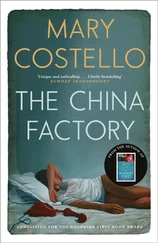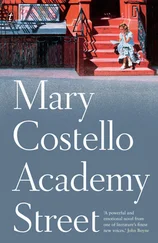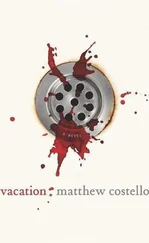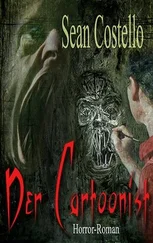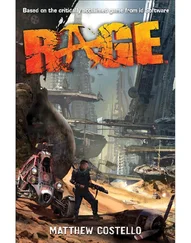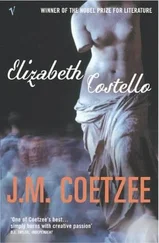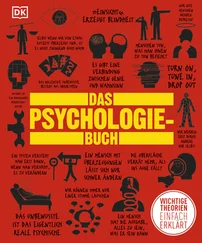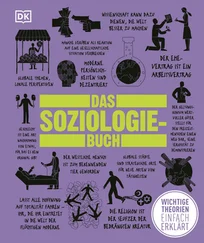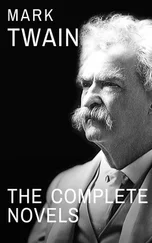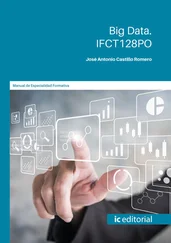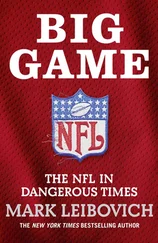Mark Costello - Big If
Здесь есть возможность читать онлайн «Mark Costello - Big If» весь текст электронной книги совершенно бесплатно (целиком полную версию без сокращений). В некоторых случаях можно слушать аудио, скачать через торрент в формате fb2 и присутствует краткое содержание. Год выпуска: 2002, ISBN: 2002, Издательство: W. W. Norton & Company, Жанр: Современная проза, на английском языке. Описание произведения, (предисловие) а так же отзывы посетителей доступны на портале библиотеки ЛибКат.
- Название:Big If
- Автор:
- Издательство:W. W. Norton & Company
- Жанр:
- Год:2002
- ISBN:978-0-393-05116-2
- Рейтинг книги:5 / 5. Голосов: 1
-
Избранное:Добавить в избранное
- Отзывы:
-
Ваша оценка:
- 100
- 1
- 2
- 3
- 4
- 5
Big If: краткое содержание, описание и аннотация
Предлагаем к чтению аннотацию, описание, краткое содержание или предисловие (зависит от того, что написал сам автор книги «Big If»). Если вы не нашли необходимую информацию о книге — напишите в комментариях, мы постараемся отыскать её.
It's winter in New Hampshire, the economy is booming, the vice president is running for president, and his Secret Service people are very, very tense.
Meet Vi Asplund, a young Secret Service agent mourning her dead father. She goes home to New Hampshire to see her brother Jens, a computer genius who just might be going mad — and is poised to make a fortune on Big If, a viciously nihilistic computer game aimed at teenagers. Vi's America, as she sees it in the crowds, in her brother, and in her fellow agents, is affluent, anxious, and abuzz with vague fantasies of violence.
Through a gallery of vivid characters — heroic, ignoble, or desperate — Mark Costello's hilarious novel limns the strategies, both sound and absurd, that we conjure to survive in daily life.
Big If — читать онлайн бесплатно полную книгу (весь текст) целиком
Ниже представлен текст книги, разбитый по страницам. Система сохранения места последней прочитанной страницы, позволяет с удобством читать онлайн бесплатно книгу «Big If», без необходимости каждый раз заново искать на чём Вы остановились. Поставьте закладку, и сможете в любой момент перейти на страницу, на которой закончили чтение.
Интервал:
Закладка:
Jens and Naubek wrote the wizard prototype together in a day and were moving to the fools when Meredith, who led all game development, pulled Jens off to work on monsters for the head creative, whose taste in chilling evil ran to conscious parody, giant hamsters, mankilling cats, and seeing eye dogs with a yen for human flesh, hunting with their handles still on their backs, a vision of suburbia gone rabid, the house pets in rebellion.
The first monster (Jens’ design with Naubek’s help) was the cunning, grinning, barrel-chested rodent biped Hamsterman, who became the game’s first breakout star. Kids in malls on five continents wore Hamsterman t-shirts, Hamsterman high-tops, chewed Hamsterman bubble gum. Hamsterman’s trademark taunt, Majorca! (delivered just before he sank his fangs into your carotid), became an empty catch-phrase in a dozen countries, the sort of thing everyone is saying for a week, like Hasta la vista! or Cowaybunga! Later monsters — Skitz the toxin-spitting cat and Farty Pup, that gassy nemesis — were almost as successful. Each monster class had its assigned strength scores and special weapons, peculiar to the version. Hamsterman 1.0 had fangs and claws; 1.2 had fangs, claws, sulphuric urine (the players loved it); the H2 series, 2.3, 2.4, 2.5, and the beloved 2.9, had fangs, claws, urine, throwing stars, crunchy eye scum, a Lance of Power, and a Colt submachine pistol, a model called the Sportster, with realistic kick-and-impact physics. Colt, of course, paid a whopping fee for the product placement, and again the players loved it. Skitz the Cat had claws and fangs, flesh-eating spit, later a machete and a souped-up butane lighter (a Bic until the litigation). Farty Pup had fangs, claws, gales of flatulence, flaming ear wax, a willingness to hump you, a pair of Sony PC speakers, a Cub Cadet four-wheel-drive snowblower, a Minolta office copier, a Yamaha Disklavier GranTouch piano, and a Sealy Posturepedic mattress. The latter products served no fighting purpose; they were just around.
Some monsters barred the path to certain prized locations where scarce water or power scrolls or healing appliances could be won by answering riddles, or performing quests, or by participating in member bonus-mile programs. That was later, when Jerzy put them in alliance with Visa, Sprint, the airlines, and a thousand select vendors worldwide. A human could buy a trip to Paris, real Paris in real life, earn a hundred thousand miles, transfer these as credit to the BigIf servers, travel with a holy fool deep into the Rockies, meet an oracle and cash the miles in for an amulet which gave the player added strength to fight and kill Hamsterman, Skitz the Cat, Farty Pup, or the dreaded Seeing Eye, doubling the points or better — Seeing Eye was a triple trophy kill. Other monsters roamed the roads, attacking any non-bot within a set radius, providing danger and a thrill, thinning out the weaker players, reducing server load and lag time at the modem farm.
The code behind the game provided many ways to die. A human gang could murder you. A monster could eat you. Toxic clouds drifted through the sky; the gamespace went dark beneath them, the shadow calculators taking over. The clouds were born at random intervals but moved pursuant to actual Weather Service models for the American southwest — Jens’ touch, and he was proud of it. Some players who had killed monsters (or solved riddles, or completed quests, or cashed in their minute-miles) acquired power manuscripts and could predict the progress of these toxic clouds and sell predictions to newer players. If you were caught outside when a cloud passed over, the servers deducted life points until your score was zero, the binary OFF-OFF-OFF-OFF, and this was death. If you went without water or food, or lost a fight, or were duped into the bush by a false bot, life points were deducted. If you spent a night in the desert, the servers ran a hypothermia algorithm which rendered you slower and clumsier and finally immobile, as real exposure would, until you zeroed out. Life, wisdom, speed, strength, agility, time, fate, magic, beauty, death — everything was numbers crunched through algorithms endlessly.
My algorithms, Jens thought in the balcony, mine and Naubek’s. Jens’ code was made of IF-switches and WHILE-loops, of flow and flow-control structures. Tell the system: test for Z, a data state. IF Z is true, do something; IF Z is false, do nothing or do something else. A program runs from START to END, branching, forking, coursing forward in its runtime, or down a screen of source ( down being after because we read that way). The program branches at the IF from the main run to a subroutine in memory or lying idle elsewhere in the shell. The subroutines were small programs, or big ones, often bigger than the main itself, containing their own control-of-flow conditionals, IFs and ELSEs and WHILE-loops (do this WHILE Z is true; when Z turns false, desist), their own forks into other subroutines or sub-subroutines, and each subsubsub was a set of definitions (let Z equal P), a battery of tests (for Z or P, for true or false), a maze of logic gates. A trip through the maze was called a thread of execution or an execution path. Take one line of code, a single logic gate, yes/no. There are two (or 2 1), potential threads, yes or no, that’s it. Add a gate, yes/no yes/no. Now there are 2 2possibilities (or four), yes-yes, yes-no, no-yes, no-no. Add a third and there were eight ways though the maze. Add one more, there were sixteen. Twenty gates, in theory, let’s say a hundred lines, an easy module (an hour’s worth of work for Jens when he was working well), produced more than a million possibilities. Software was responsive, supple, thoughtlike, powerful to the extent that it could branch and pick a path in response to shifting data states, switching at the IFs, falling always toward the engineer’s intended END, yet every fork was a menace to control, a potential bug and fatal logic bomb. A single slip in syntax, a semicolon missing from eighteen million lines, could send the system brute-computing to its crash, so power becomes doubt, Jens thought, which was also thoughtlike. He had built this game, written it, the IFs and potential threads. He was certain of its beauty. When Walter judged him, when Vi criticized with her scanning eyes, Jens knew they couldn’t see the beauty of the IFs.
He watched the players moving west across the screen. It was rumored in the thousand or so BigIf-themed chat rooms that if you made it through the game, from the crater to Redondo Beach, with sufficient wisdom points and solved a final riddle there, you would be admitted to a new environment, which was said to be like Paradise, prepared and waiting in the database. This was rumor, not fact. No one knew for certain what lay at the end-of-play. The only way to know was to arrive. The parent corporation, BigIf Systems, owned by Jerzy Czoll and a claque of venture caps, refused to issue the customary game guides, forcing a hundred thousand players to wander the desert, killing monsters and each other, paying steady monthly fees, accumulating points, and gossiping. It was generally thought that no player had made it all the way through. A few claimed they had, by hacks and cheats, crossed into the next world, but they were exposed as frauds and mercilessly flamed. Seven humans — this, again, was rumor — had made it to the beach with insufficient wisdom points to solve the final riddle and pass through the water-door. The seven who made it were forced back into the desert to solve more riddles and kill bigger monsters, and generally pad their wisdom tallies, but all seven died when they turned back.
If the object of the game was to get to Los Angeles with wisdom, the key to playing was surviving and the key to this was money. When you entered BigIf for the first time, the shell assigned you a few days’ worth of food and water and a hundred game dollars, which would buy another few days’ worth from a merchant bot, but after that it was slow death from thirst and hunger unless you were robbed or scammed or ran into a pack of killer cats or got caught in a toxic downpour, in which case death wasn’t slow. To stay alive and keep trekking west, you had to earn money to buy provisions. There were several software-sanctioned ways to do this. Wise players hired out as guides. Strong players worked as bodyguards. Even a new player could find a spring and sell the water, or gather firewood in the overlush forests, or make and sell bread and boots and tunics, and survive that way. One side effect of giving the game a shadow economy was that most players forgot about the wisdom pilgrimage and settled into one of the squatter camps along the way, selling simple, useful items to the new players streaming from the crater every day. You could buy and sell weapons — anything from cudgels and daggers to crossbows to fully modeled firearms. On most afternoons, when America was playing, the plains were dotted with fresh dead and the stooped figures of itinerant scavengers who moved among the bodies collecting food and water icons, stripping the dead of boots and any relatively undamaged armor. Some pickers, as these scavengers were called, waited at the crater for new players to emerge. Players who moved jerkily were new to their PCs, or breaking in a mouse or joystick or power glove or data helmet, and it was almost sad to watch them bumble as the robbers circled. Players with geek names (K00L RULZ) were generally geeks — a fair assumption, since they had named themselves — and geeks played awkwardly, often over their parents’ pokey at-home modems. They stood like hapless water bags before the robbers porting over high-speed DSL or corporate T-3s. The pickers waited by the crater, following the newbies, who sometimes asked the poignant question Why R U following me? — the text floating in a box above their heads as the robbers struck or Hamsterman popped up and sank his fangs. Robbers sometimes killed each other over these choice victims. Pickers fought pickers for the spoils and other robbers waited, killing pickers as other pickers waited for the spoils of the spoils, and some of these were robbed. Others got away and sold the scavenged goods at stalls along the road, making money to buy weapons to stave off the robbers. Some players became prostitutes, taking players to a quiet spot for a bit of mouse-clicking and hot typing back and forth. The hookers also had off-duty chat rooms, buddy lists, and home pages, known only to them, where they ridiculed the johns, swapped investment tips, and inveighed against the robbers who posed as prostitutes, leading players to the canyons and clubbing them. Bad for business, said the whores. Some whores plotted in their chats to lure sporting robbers into the canyons for revenge, others e-mailed pseudo-postcoital thank-you notes to the robber-johns. The notes contained one of several nasty software viruses as an.exe attachment.
Читать дальшеИнтервал:
Закладка:
Похожие книги на «Big If»
Представляем Вашему вниманию похожие книги на «Big If» списком для выбора. Мы отобрали схожую по названию и смыслу литературу в надежде предоставить читателям больше вариантов отыскать новые, интересные, ещё непрочитанные произведения.
Обсуждение, отзывы о книге «Big If» и просто собственные мнения читателей. Оставьте ваши комментарии, напишите, что Вы думаете о произведении, его смысле или главных героях. Укажите что конкретно понравилось, а что нет, и почему Вы так считаете.

